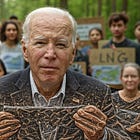The Rio Grande LNG Project is a decade-long permitting odyssey
A decade later, will we see expedited progress under the new Administration?
The Rio Grande LNG Terminal and Rio Bravo Pipeline Project, first proposed in 2016, exemplify the grueling pace of America’s energy infrastructure permitting process. Nearly a decade later, on March 28, 2025, the Federal Energy Regulatory Commission (FERC) released a draft supplemental Environmental Impact Statement (EIS) for the project--yet another chapter in a saga marked by legal challenges, environmental reviews, and shifting regulatory demands.
It all began on May 5, 2016, when Rio Grande LNG, LLC and Rio Bravo Pipeline Company, LLC filed a joint application with FERC to build an LNG export terminal and a 136-mile pipeline system in South Texas. Initial approval came in November 2019, but that victory was short-lived. In 2021, the D.C. Circuit Court remanded the decision, citing “inadequate analysis of climate change and environmental justice impacts”. FERC tried again in April 2023, only for the court to strike it down in August 2024 for failing to properly address air quality data and a proposed carbon capture system. Now, in 2025, FERC is back with a supplemental EIS, still wrestling with the same issues… plus updates on endangered species and emergency plans.
This nine-year ordeal, spanning pre-filing in 2015 to today’s unresolved remand, highlights a permitting process bogged down by endless reviews and litigation. Over 217 days of public comment periods and six scoping sessions have fed into a cycle of analysis, court rulings, and re-analysis. Even as the project promises economic benefits and energy exports, it remains stalled, with FERC still unable to issue a final green light.
The latest EIS acknowledges disproportionate impacts on environmental justice communities and potential air quality concerns near a pipeline compressor station, but it stops short of recommending the carbon capture alternative. Meanwhile, the clock ticks--construction can’t begin until more consultations and modeling are complete. For a project first envisioned a decade ago, the finish line remains frustratingly out of reach, raising questions about whether America’s regulatory maze is stifling its energy future.







Buried in red tape. Interesting. I thought FERC was the bottleneck, but here it sounds like the problem is the district courts. How does it get into court? Is it because certain environmental groups keep suing?